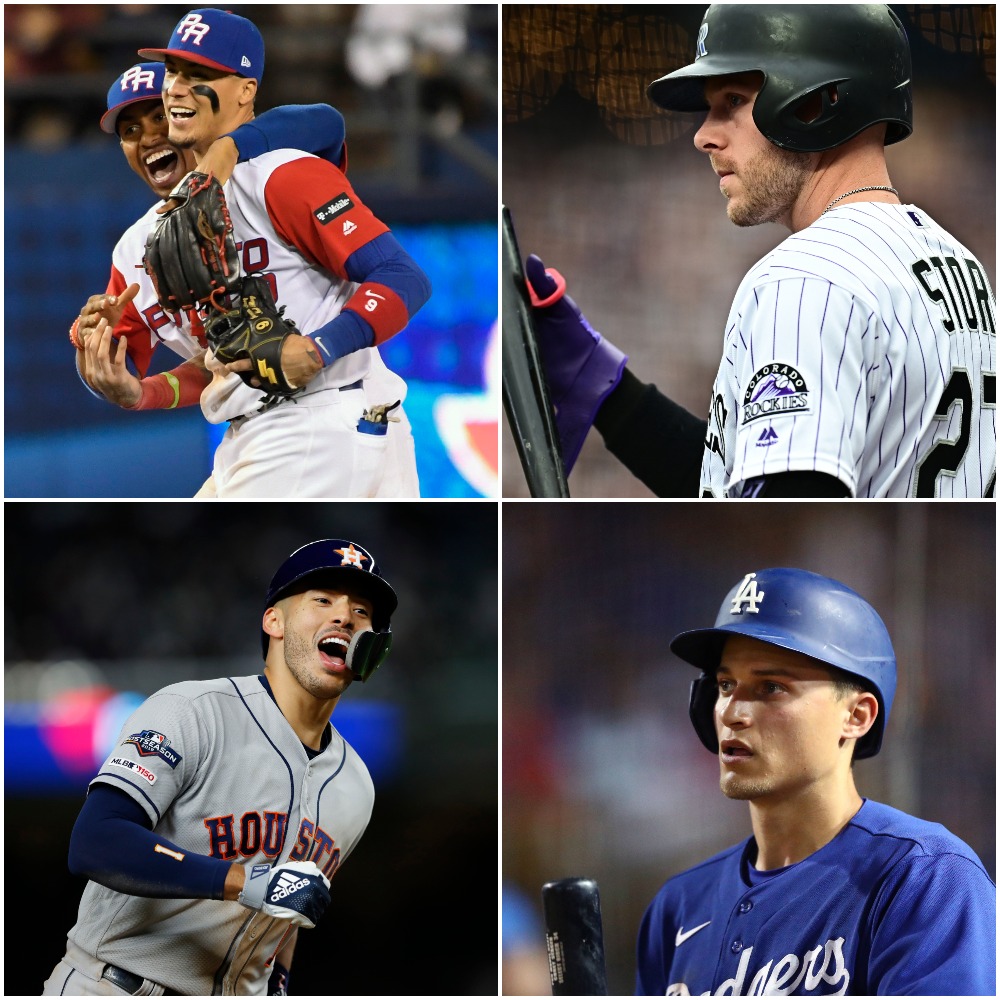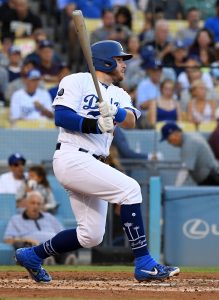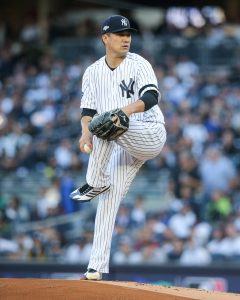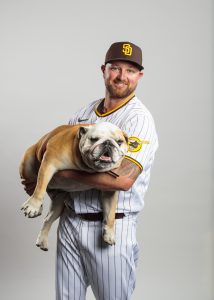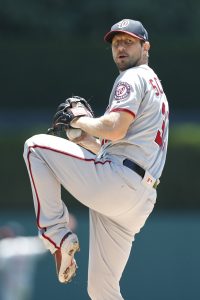It was a pretty quiet offseason in Kansas City, though the Royals brought two franchise icons back into the fold and took a flier on a potential post-hype breakout candidate for third base.
Major League Signings
- Alex Gordon, OF: One year, $4MM
- Maikel Franco, 3B: One year, $2.95MM
- Jesse Hahn, RHP: One year, $600K (Hahn was re-signed after originally being non-tendered)
- Total spend: $7.55MM
Trades And Claims
- Acquired RHP Chance Adams from the Yankees for minor league SS Cristian Perez
- Selected RHP Stephen Woods Jr. from the Rays in the Rule 5 Draft
Notable Minor League Signings
- Trevor Rosenthal (contract was selected to MLB roster, guaranteeing Rosenthal’s $2MM salary), Greg Holland, Humberto Arteaga, Braden Shipley, Matt Reynolds, Erick Mejia
Notable Losses
The Royals began their offseason by making the expected hire of Mike Matheny as the team’s new manager. It was widely assumed that Matheny (brought into the organization the previous winter as a special advisor) would succeed Ned Yost in the dugout, and the former Cardinals skipper will now take over Missouri’s other MLB club after a somewhat turbulent ending to his tenure in St. Louis.
Whit Merrifield drew trade interest from the Padres and Cubs over the course of the winter, and it’s safe to assume that the Royals fielded calls from at least a few other teams given Merrifield’s overall value. The 31-year-old is one of the better all-around veteran assets in the game, considering his ability to play multiple positions, his inexpensive contract that could extend through the 2023 season, and his three consecutive seasons of strong production.
And yet, Merrifield is still wearing the K.C. blue heading into whatever becomes of the 2020 season. The same is true of left-hander Tim Hill, who drew interest from the Athletics, Yankees, and other clubs in the wake of two impressive years of work in the Royals’ bullpen. There wasn’t as much buzz about Danny Duffy and Ian Kennedy (set to be the club’s highest-paid players in 2020), yet the two hurlers are also still in the fold, as the Royals didn’t pursue any salary-dump types of moves.
In short, it was a pretty stand-pat type of offseason for GM Dayton Moore, as the Royals didn’t make any truly significant steps towards either trying to build a contender or in further rebuilding. Despite losing 207 games over the 2018-19 seasons, Kansas City has resisted undergoing a full overhaul, and upper management seems to believe that the Royals’ core group of talent isn’t too far away from bringing the club back into the postseason hunt.
Speaking of upper management, the winter saw a change at the very top of the organization, as the franchise was sold to Kansas City businessman John Sherman. Formerly a minority owner of the Indians since 2016, Sherman’s direction for the Royals has yet to be determined, though much of the fanbase naturally hopes that Sherman will be more willing to spend on payroll. Unfortunately, it may yet be months or even years before we get an answer to that question, given how the COVID-19 shutdown and the threat of a canceled 2020 season equals a massive revenue loss for every MLB team.
Even before the league hit the pause button, there wasn’t much in the way of splashy roster moves, as Moore pursued low-cost upgrades. The most notable new face in the mix is Maikel Franco, the former top Phillies prospect who was non-tendered in December (Philadelphia decided against paying Franco a projected $6.7MM arbitration salary). The Royals ended up signing Franco for a one-year, $2.95MM deal, choosing Franco over another infield option in former Brewer Travis Shaw.
Franco has shown only flashes of potential at the Major League level, hitting .249/.302/.431 with 102 home runs over 2539 career plate appearances with the Phillies. The Royals already believe they have found some correctable flaws in Franco’s swing, however, making him an intriguing low-risk option for Kansas City at that price tag. Franco is also just 27 years old and controllable through 2021 via arbitration.
In an absolute best-case scenario, K.C. hopes Franco can deliver anything close to the big breakout Jorge Soler just enjoyed in his own age-27 season, as Soler led the American League with 48 homers in 2019. That performance instantly turned Soler into a potential franchise cornerstone, putting him along with Merrifield, Adalberto Mondesi, and Hunter Dozier as what the Royals hope will be the building blocks of their next winning team. Soler is a free agent after 2021. A long-term deal seems a possibility, though the sides didn’t tie one up before the season was paused.
Franco’s installation at third base set off a chain reaction within the Royals’ everyday lineup. Dozier saw the majority of action at the hot corner last season, though he will now be penciled in as the regular right fielder, with Merrifield moving to center. First base will be manned by the “soft platoon” of Ryan O’Hearn and Ryan McBroom, while Nicky Lopez will take over the starting second base job now that Merrifield is slated for outfield duty.
The Royals also have in-game flexibility thanks to Merrifield and Dozier’s positional versatility, and the open question about who would serve the utility infield role may not be as pressing as it was early in Spring Training since expanded rosters will almost surely be part of any 2020 season. Humberto Arteaga, Kelvin Gutierrez, Erick Mejia, and new signing Matt Reynolds could all see some bench time as part of a larger roster. Likewise, the decision of which of Bubba Starling or Brett Phillips would win the backup outfield job is now probably a moot point, since the Royals will have roster space for both out-of-options players.
Speaking of the K.C. outfield, longtime Royals fixture Alex Gordon decided to return for a 14th Major League season, signing a one-year, $4MM pact. Gordon had a bit of a resurgence at the plate in 2019 — his 96 OPS+ and wRC+ were his highest since 2015 — and he still offers a very solid left field glove and a highly-respected veteran voice in the clubhouse. After flirting with retirement, it isn’t yet known if Gordon intends 2020 to be his last season, which creates the unfortunate possibility that we may have already seen his last game if the 2020 season never gets underway. (Or, if all of MLB’s games this season are played in Arizona and/or Florida, Gordon might not get another chance to play in front of the Kansas City fans.)
Gordon, Duffy, and Salvador Perez (who’s returning from Tommy John surgery) are the only remaining members of the Royals’ 2015 World Series-winning team, though there seems to be a chance Greg Holland could rejoin them. Holland signed a minors contract with the Royals, and the league shutdown and subsequent transactions freeze has left the right-hander in something of a limbo state. Kansas City did select the contract of another minor league bullpen signing in Trevor Rosenthal prior to the freeze, which could hint that the Royals have already made their choice between the two veteran relievers.
Looking to rebound after a pair of rough seasons, Holland hasn’t been a truly dominant relief arm since prior to his 2015 Tommy John surgery, when he was the closer of Kansas City’s old “Law Firm” bullpen trio that also consisted of Kelvin Herrera and Wade Davis. If the Royals decide they better call Holl to the big league roster, it would only add another $1.25MM to the payroll, and Holland has still been able to amass a lot of strikeouts even while struggling to limit walks and home runs.
Holland is hoping to join Rosenthal and Rule 5 pick Stephen Woods Jr. as new faces in the K.C. bullpen, with minors signing Braden Shipley and the re-signed Jesse Hahn also competing for jobs. Hahn has mostly worked as a starter at the big league level, but his six appearances last season after returning from Tommy John surgery came as a relief pitcher.
Newly-acquired Chance Adams also mostly pitched as a starter during his heyday as a top-100 prospect, though the former Yankee seemingly hit a wall over the last two seasons at both the Triple-A level and in 33 big league innings with New York. Adams looked good (1.69 ERA, six strikeouts, no walks) over 5 1/3 Spring Training frames, making him a possibility to eventually see work in the Royals’ bullpen, or perhaps even get another look as a starter.
While Duffy, Brad Keller, Jakob Junis, and Mike Montgomery had the first four spots in Kansas City’s rotation spoken for, the fifth starter competition seemed wide open before spring camp ended. The most interesting candidate was top prospect Brady Singer, even if the odds were on the former 18th overall pick beginning the season in the minors considering Singer has yet to pitch past the Double-A level. Since there now might not be a minor league season in 2020, however, the Royals could opt to give Singer and several other arms who were on the borderline of winning jobs some playing time on an expanded roster.
2020 Season Outlook
The Royals were hoping to see breakouts or further progress from several players (including Mondesi, Lopez, O’Hearn, McBroom, Franco, and Junis) in order to see where they really stood in the rebuild process, and whether or not the club could start to make a concerted effort to compete as early as 2021. Even with a new owner, it’s probably unlikely that K.C. would ever become a truly big spender, though a good chunk of money will come off the books once Kennedy’s contract is up after the season.
The specter of a shortened MLB season and potentially an entirely-canceled minor league season will now cost the Royals some crucial development time for their young players, and the transactions freeze may have also erased the possibility of the club working out a contract extension or two prior to Opening Day. Extension talks could resume once the freeze is lifted, of course, though the nature of such negotiations could be entirely different given the state of a post-shutdown baseball world.
As to what the Royals did accomplish over the winter, it wasn’t a long list of moves by any means, and K.C. is likely to be battling the Tigers for fourth place in the AL Central even in the anything-can-happen realm of an abbreviated season. A new owner and a new manager are indicative that a new era has indeed begun in Kansas City, even if the club is still figuring out what roster pieces can be carried forward into this next phase.
How would you grade the Royals’ offseason moves? (Link for app users)

